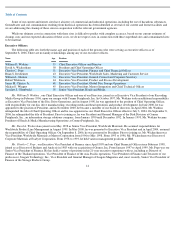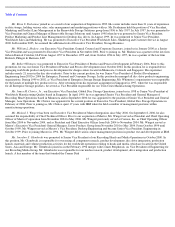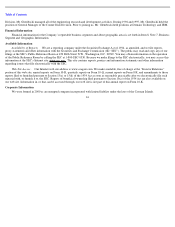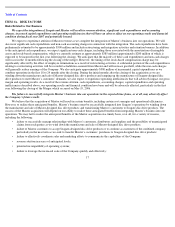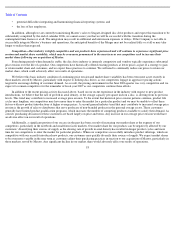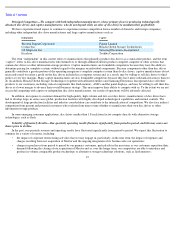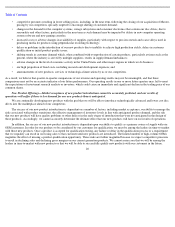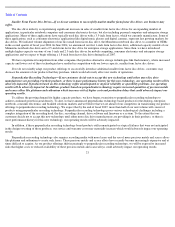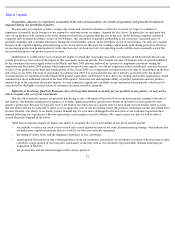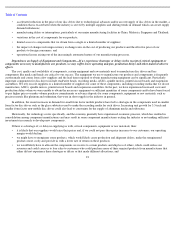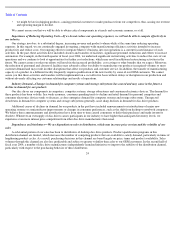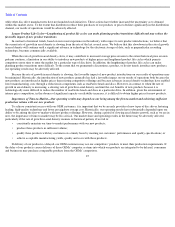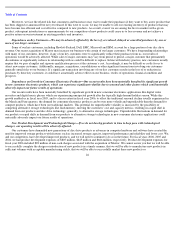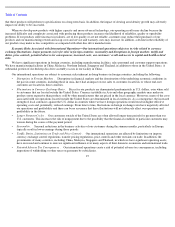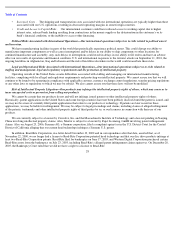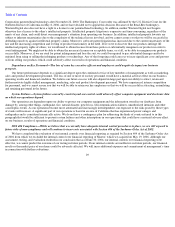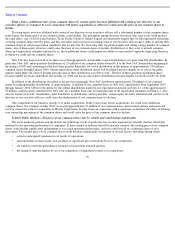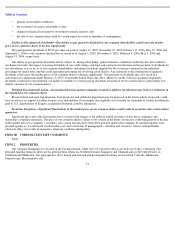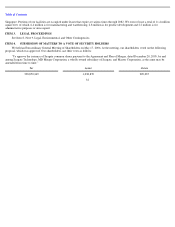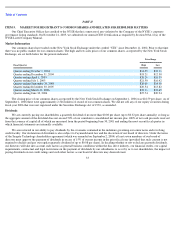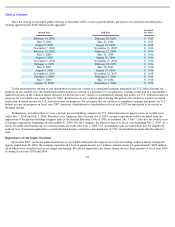Seagate 2005 Annual Report Download - page 26
Download and view the complete annual report
Please find page 26 of the 2005 Seagate annual report below. You can navigate through the pages in the report by either clicking on the pages listed below, or by using the keyword search tool below to find specific information within the annual report.
Table of Contents
We cannot assure you that we will be able to obtain critical components in a timely and economic manner, or at all.
Importance of Reducing Operating Costs—If we do not reduce our operating expenses, we will not be able to compete effectively in
our industry.
•
we might be late in shipping products, causing potential customers to make purchases from our competitors, thus causing our revenue
and operating margin to decline.
Our strategy involves, to a substantial degree, increasing revenue and product volume while at the same time reducing operating
expenses. In this regard, we are continually engaged in ongoing, company-wide manufacturing efficiency activities intended to increase
productivity and reduce costs. Our ongoing efforts to integrate Maxtor’s business into our operations is a current focused instance of such
activities. In the past, these activities have included closures and transfers of facilities, significant personnel reductions and efforts to increase
automation. For example, in the fourth quarter of fiscal year 2004, we undertook significant restructuring activities to reduce the costs of our
operations and we continue to look at opportunities for further cost reductions, which may result in additional restructuring activities in the
future. We cannot assure you that our efforts will result in the increased profitability, cost savings or other benefits that we expect. Moreover,
the reduction of personnel and closure of facilities may adversely affect our ability to manufacture our products in required volumes to meet
customer demand and may result in other disruptions that affect our products and customer service. In addition, the transfer of manufacturing
capacity of a product to a different facility frequently requires qualification of the new facility by some of our OEM customers. We cannot
assure you that these activities and transfers will be implemented on a cost-effective basis without delays or disruption in our production and
without adversely affecting our customer relationships and results of operations.
Industry Demand—Changes in demand for computer systems and storage subsystems has caused and may cause in the future a
decline in demand for our products.
Our disc drives are components in computers, computer systems, storage subsystems and consumer electronics devices. The demand for
these products has been volatile. In a weak economy, consumer spending tends to decline and retail demand for personal computers and
consumer electronics devices tends to decrease, as does enterprise demand for computer systems and storage subsystems. Unexpected
slowdowns in demand for computer systems and storage subsystems generally cause sharp declines in demand for disc drive products.
Additional causes of declines in demand for our products in the past have included announcements or introductions of major new
operating systems or semiconductor improvements or changes in consumer preferences, such as the shift from desktop to notebook computers.
We believe these announcements and introductions have from time to time caused consumers to defer their purchases and made inventory
obsolete. Whenever an oversupply of disc drives causes participants in our industry to have higher than anticipated inventory levels, we
experience even more intense price competition from other disc drive manufacturers than usual.
Dependence on Distributors—We are dependent on sales to distributors, which may increase price erosion and the volatility of our
sales.
A substantial portion of our sales has been to distributors of desktop disc drive products. Product qualification programs in this
distribution channel are limited, which increases the number of competing products that are available to satisfy demand, particularly in times of
lengthening product cycles. As a result, purchasing decisions in this channel are based largely on price, terms and product availability. Sales
volumes through this channel are also less predictable and subject to greater volatility than sales to our OEM customers. In the second half of
fiscal year 2004, a number of disc drive manufacturers independently launched initiatives to improve the stability of the distribution channel,
particularly with respect to the purchasing behavior of these distributors,
24


